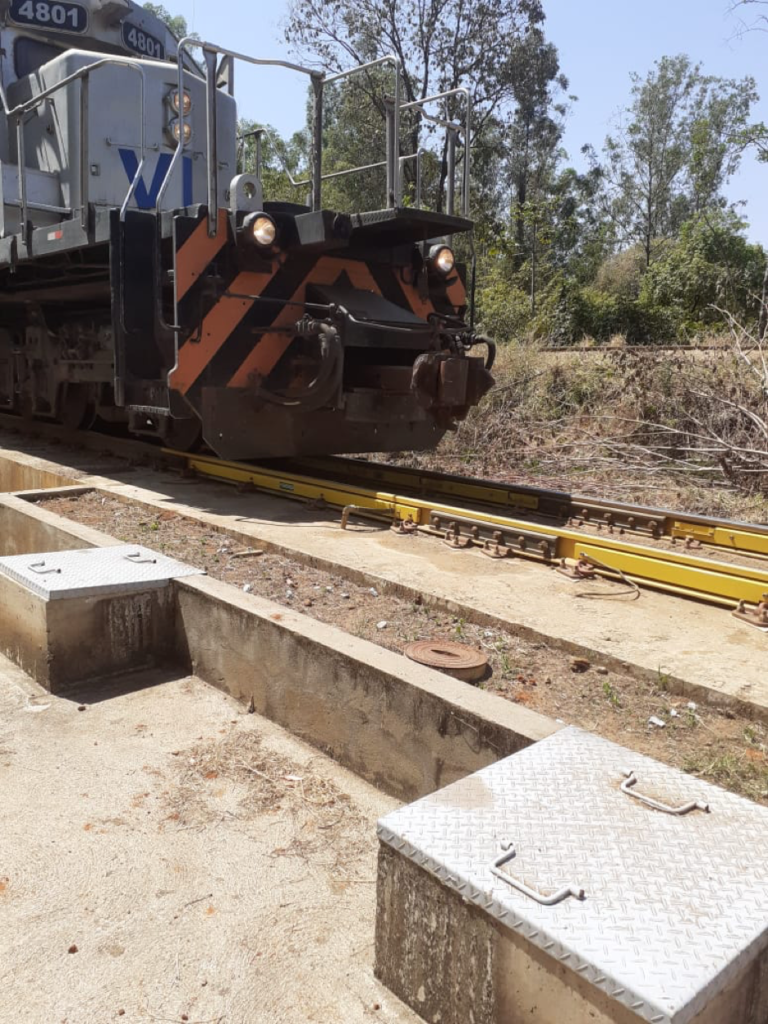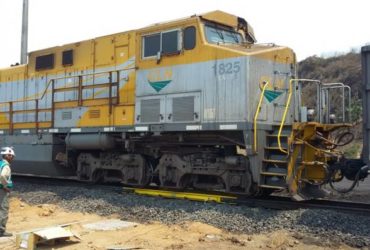
What is In Motion Rail Scale and how it works
Working with freight transport on trains requires a lot of expertise from workers’ side, in order to choose the right wagon to be used. As a result, just as in road transportation, for example, it is necessary to consider the weight of what is being transported in order to avoid problems during the trasportation. To do this verification, a dynamic scale can be used. But, what is a dynamic balance?
This type of scale is a precision equipment that is able to accurately weight the load of each wagon, ensuring better accommodation of materials. As a result, and also due to the higher volume of cargo transported on the railroads in recent years due to agribusiness, the demand for scales has increased, having in 2018 an increase of 10% related to the previous year.
Given this scenario, do you want to know in more detail what is a dynamic scale? Then continue to read this article and get to know more about the attributes that make this equipment an extremely important item for companies that carry out rail transportation.
Content Index
What is a dynamic scale?

Just as the name stands for and you could be imagining, a dynamic railroad scale is an equipment that weighs train wagons in motion. In other words, for the weighing process to occur, the train must pass over where the scale is installed.
The value obtained may refer to the load that is deposited on each rail car or the total value of each rail car. In case you need to know the total load that is transported at this moment, simply highlight the simple sum of all the values indicated by the weighbridge. weighs the train and its wagons while it is in motion. In other words, for this verification to occur, the train must pass over where the scale was installed, thus obtaining the load value.
Regarding the structural part of the equipment, the rails that are design for the weighing process are approximately 3.94 meters long, being installed directly on the track, requiring no additional work in models with 1% and 0.5% maximum error. The scale sensors are especially robust and integrated within the weighing rails.
For the most accurate equipment model with 0.2% of maximum error, it is essential to build a rigidly platform in the region where the weighing rails will be installed. This platform guarantees better stability of the wagon during weighing, thus increasing the conditions for weighing with higher precision.

This feature, in particular, manages to provide greater rigidity to the equipment, which is not found in models used in ordinary cells. Depending on what the client needs, the dynamic scale can also integrate a wagon identification system, by reading its prefix. The most common systems for this are RFID and OCR-Rail equipment.
In addition, models with wheel sensors detection can also be found, allowing maneuvers to be made while the weighing process takes place. This wheel sensor detection technology is becoming obsolete. Currently, Massa Pesagem has a state of the art technology that uses no other sensors apart from those used to weigh. Still, the equipment is able to detect the movement direction of the composition, being able to weight and count axle even when the operator makes maneuvers over the scale during the weighing process.
Technology applied in dynamic weighing

To be able to determine the wagon’s weight at the exact moment of it is passing over, the dynamic scale uses digital load cells that make the weighing data available remotely to the client company via a TCP/IP network.
Based on this communication network, the dynamic scales of Massa Pesagema Brazilian company that has been operating in the weighing systems business since 2004, send to the client the weight values obtained through the SIMMSOFT operating software (version 7), based on the Microsoft Windows ™ platform.
All data is processed through this software and the values of the individual weight of the wagon and train are obtained, the weight per axle, wagon and also the load distribution by quadrants. As already mentioned, with all this information it is possible to prevent the occurrence of accidents and also avoid the need for such a high number of maintenance, which generate a greater expense for the company.
In addition to these data, Massa equipment system also provides the total transported average and standard deviation, optimizing the processes and the use of this important and efficient modal means of transport for large loads and distances.
Dynamic scale benefits

Now that you have seen in more detail what dynamic scales are, it is time to also understand what are the effective benefits that this equipment can bring to your company. Check it out below:
1 –Precision

The old scales used to weigh trains and wagons have become obsolete without counting on the application of technology. Nowadays, it is no longer possible to stay in the field of speculation, you need to be practically sure to avoid losses and accidents.
Therefore, when understanding what is a dynamic scale, it is understood that the equipment provides the necessary precision for this type of service. Fast and reliable weighing.
2 –Versatility

A dynamic scale can offer a versatility that other ordinary scales cannot. This equipment can operate in two different ways: the first is with the weighing of tare and gross carried out by a single scale; the second way being carried out by two scales simultaneously.
It is recommended to adopt the first configuration in cases where it is necessary to control the entry or exit of goods in railroads yards of steel mills, ports, agribusiness or even logistics companies, for example. The second way of use, on the other hand, makes more sense in the case of loading ore in the yard of a mining company, or in a terminal for the transhipment of products in bulk from agribusiness, which operate with loading by bins and / or unloading by hoppers, for example.
This is due to the fact that this system arrangement allows the least possible impact on the operation by introducing a weighing process that does not require significant changes in the production line, such as additional maneuvering of the wagons.
3-Time optimization

Another point that stands out when discovering what is a dynamic scale is the optimization of processes provided by the equipment. Being easy to install, requiring no complex installation, this scale model can be put into operation quickly.
In addition, due to the fact that the train does not need to stop during the weighing process, there is a huge time gain to check the entire load and free the train to carry out the transportation.
Conclusion
From the explanation of what is a dynamic scale, it is clear that this model of equipment is fundamental for the correct weighing of trains and, consequently, less chance of accidents occurring. Massa Pesagem e Automação has 3 different models of scale. Click here and know more.
Did you like our content? If so, follow us on Instagram that we always let you know when new content is posted.




